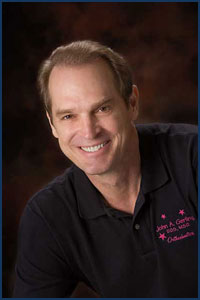
Elastic Tie: Tiny rubber band that fits around the bracket to hold the archwire in place.
Archwire: The main wire that acts as a track to guide the teeth along. It's changed periodically throughout treatment, as teeth move to their new positions.
Loop in Archwire: Frequently used for closing space left by an extraction. Many archwires don't have a loop.
Bracket: Small attachment that holds the archwire in place. Most often, a bracket is cemented directly onto the tooth's surface, eliminating the need for a band.
Headgear Tube: Round, hollow attachment on the back bands. The inner bow of the headgear fits into it.
Coil Spring: Fits between brackets and over archwire to open space between teeth.
Tie Wire: Fine wire that is twisted around the bracket to hold the archwire in place.
Band: A thin ring of metal fitted around a tooth and cemented in place. The band provides a way to attach the brackets to the tooth.
Hook: Welded or removable arm to which elastics (rubber bands) are attached.
Elastic (Rubber Band): Small rubber band that is hooked between different points on the appliance to provide pressure to move the teeth.
Hope this helps! Give us a call if you have any questions!









